Growing a Forest at Peacedale Preserve
June 17, 2025
A dark red Peacedale Preserve sign in a field newly planted with tiny seedlings in protective tree tubes.
By Preserve Manager Jarrod Shull.
In May, 2025, we completed a large-scale tree planting project at our Peacedale Preserve in Landenberg, Chester County, PA. With the help of contractors, we planted 11,020 native seedlings along waterways and across 36 acres of former fields. Over time, the seedlings will mature to a diverse forest, offering habitat for wildlife and improve water quality.
The creeks that travel through Peacedale Preserve flow to Big Elk Creek, onward to Elk River, and empty into Chesapeake Bay. About 2,700 plant and animal species live in the Chesapeake Bay Estuary, and fishermen harvest around 500 million pounds of seafood from the Bay every year.
Natural Lands is committed to creating and maintaining a minimum 100-foot buffer along all waterways that run through our nature preserves. As they mature, the native trees we’ve planted at Peacedale will help filter out sediment and other pollutants, reduce erosion, and slow stormwater to prevent flooding.
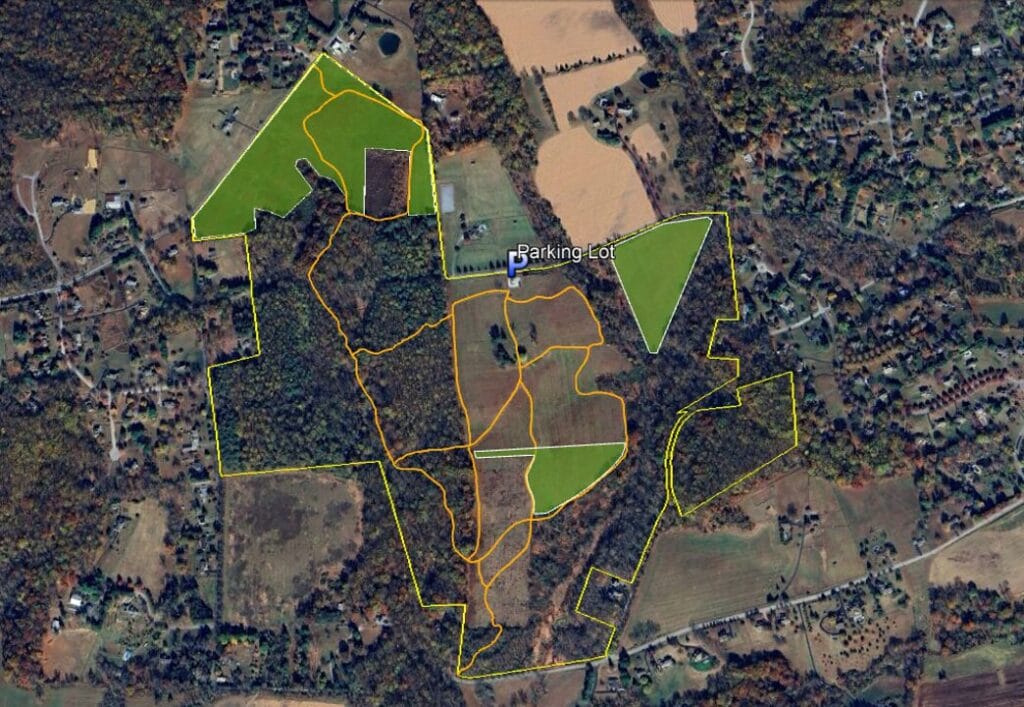
map of Peacedale Preserve with tree planting locations in green
When Europeans first explored Pennsylvania, trees covered 90 percent of the territory. Though the Native Americans who had lived in the region for thousands of years did clear some land for hunting and agriculture, famed naturalist John Bartram still found forests so thick it was “as if the sun had never shown on the ground since the creation.” But by 1850, millions of acres had been cleared for farming, timber, and firewood.
In addition to improving water quality, the tree planting project at Peacedale Preserve will re-establish forest cover and improve wildlife habitat. In particular, woodlands are essential for migratory songbirds—such as Scarlet Tanager and Wood Thrush—that rely on the dense forest for food and protection from the weather and predators.
Installing that many trees and the photodegradable tubes they need to protect them from the deer is a pretty involved project! We hired contractors to drill holes and plant the trees, but our staff had to prep everything to be ready for their arrival in late May.
The first step involved ordering the seedlings, tree tubes, and wooden stakes. The tubes arrived in the fall of last year… 18,000 of them. We stored them in the old stone barn at nearby Stroud Preserve.
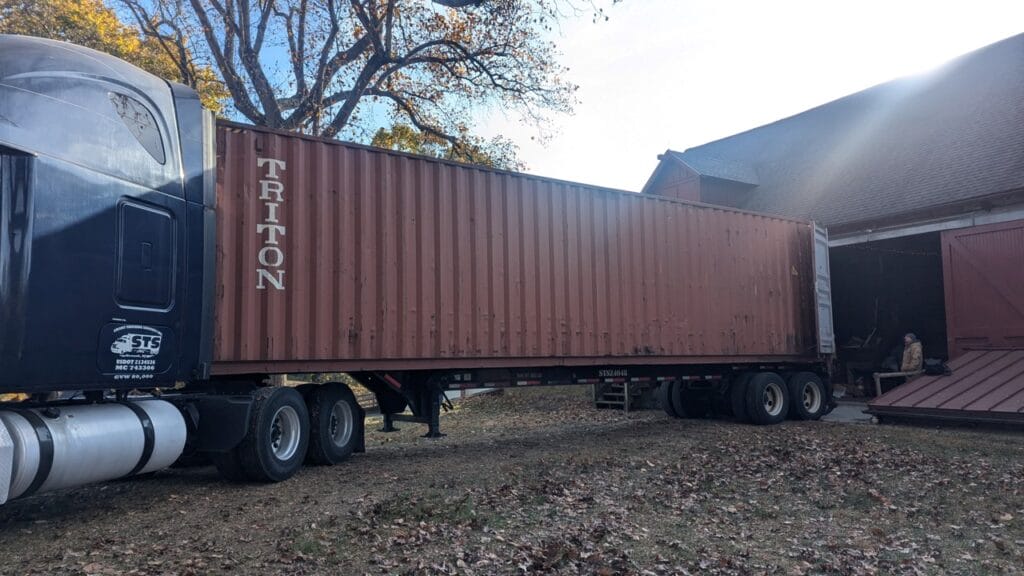
18,000 photodegradable tree tubes delivered to Stroud Preserve | Photo: Jarrod Shull
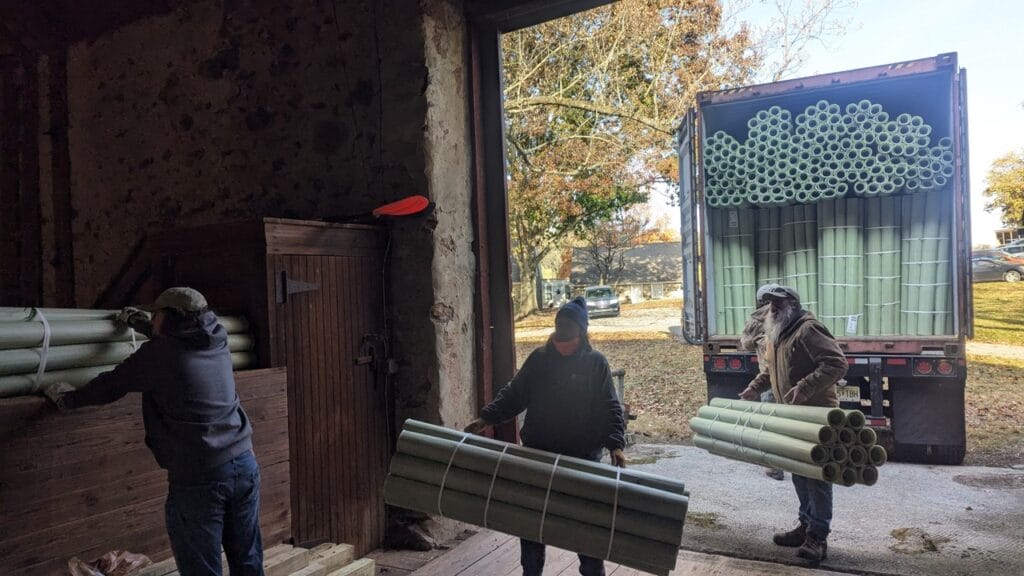
Stewardship staff members unload tree tube bundles into the barn at Stroud. | photo: Jarrod Shull
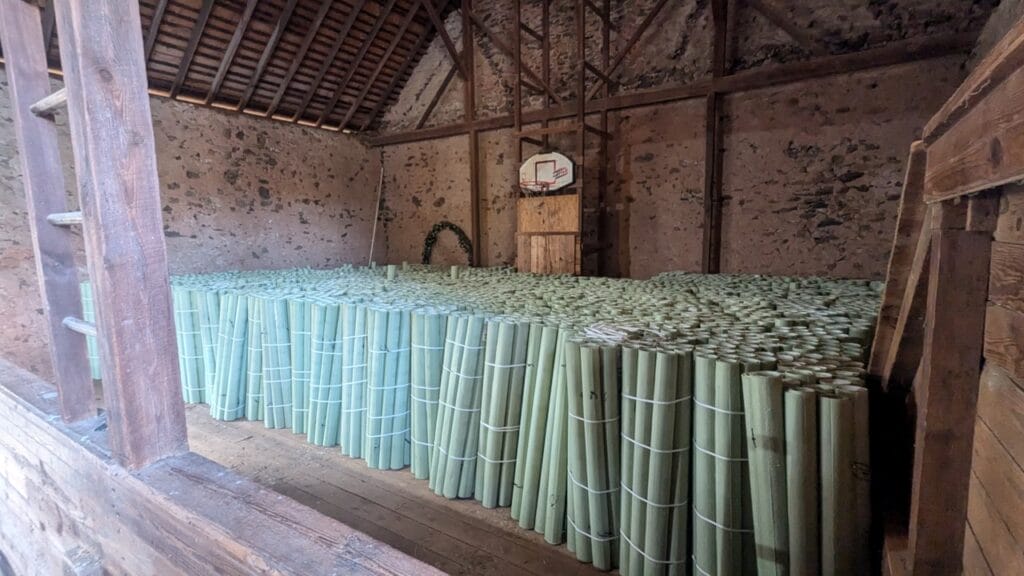
Tree tubes stacked for short-term storage at Stroud | Photo: Jarrod Shull
When the seedlings arrived in mid-March, we stored them at Stroud Preserve’s barn, too, since there is room there and I live at the preserve and could water the trees regularly. Several preserve stewardship staffers helped unload the truck… 440 flats of 11,020 seedlings. The seedlings are a variety of native species, including red maple, silver maple, hornbeam, redbud, tuliptree, blackgum, sycamore, white oak, swamp white oak, pin oak, chestnut oak, elderberry, and flowering dogwood.
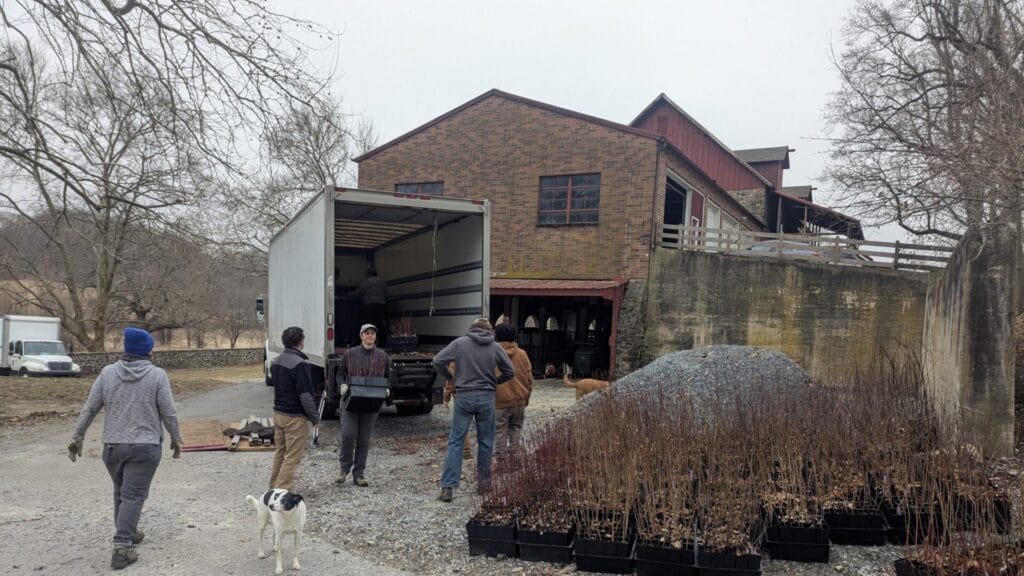
Staff unloaded tree seedlings at Stroud Preserve. | Photo: Jarrod Shull

11,200 tiny native tree seedlings in 440 flats stacked up outside the Stroud Preserve barn | Photo: Jarrod Shull
Just a few weeks later, the wooden stakes were delivered to Peacedale Preserve. We unloaded them with a forklift, and then drove the pallets of stakes to the three planting locations at the preserve, and covered them with tarps. We also covered the seedlings that same day, as there was frost predicted overnight.
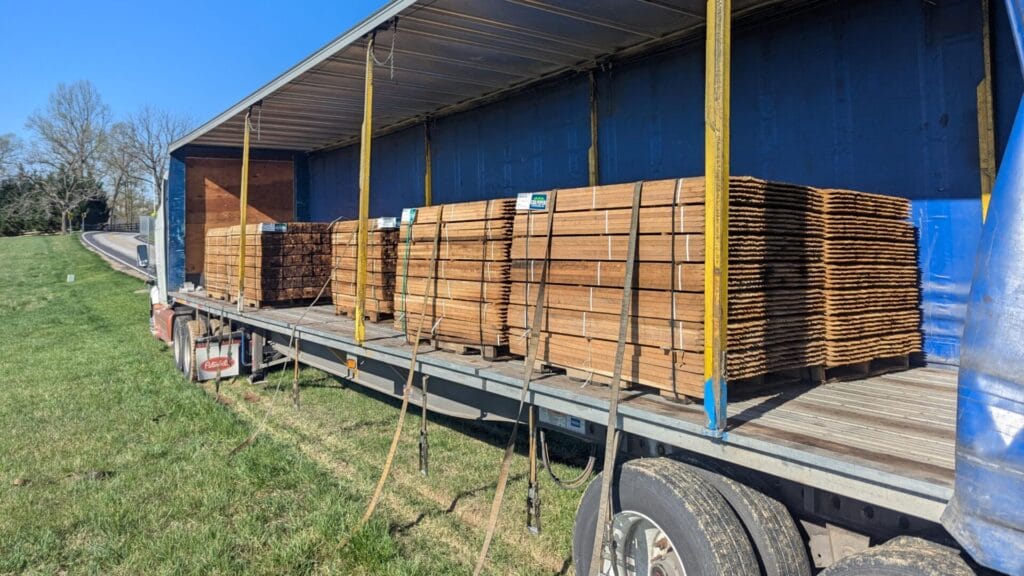
Wooden stakes arrive on pallets | Photo: Jarrod Shull
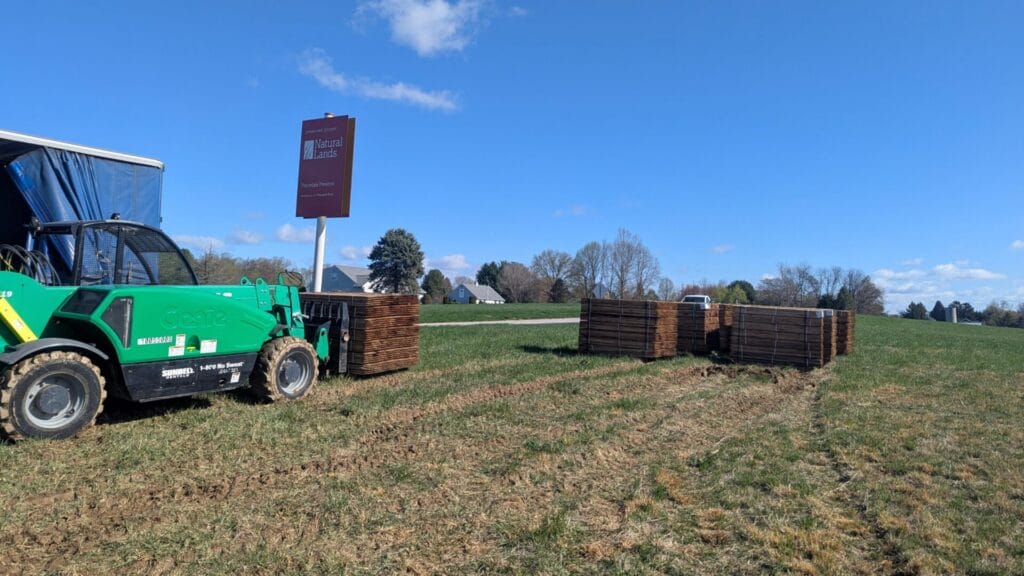
We used a telehandler to move the pallets of stakes to three locations at Peacedale. | Photo: Jarrod Shull
Next it was time to move all those plastic tree tubes from Stroud out to Peacedale. We needed to load both the bed of the pick-up truck and a trailer to get them all out to the three planting locations.
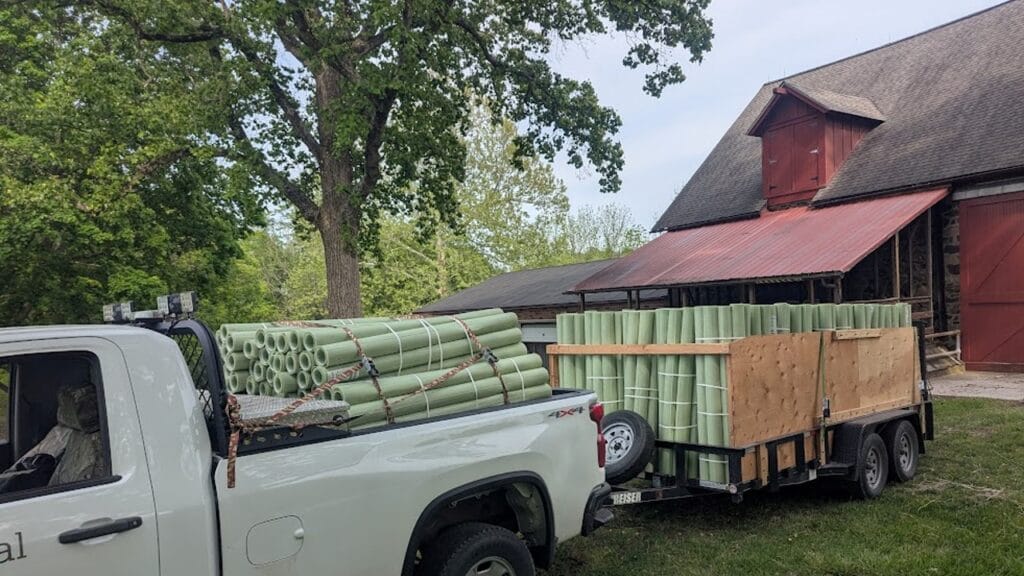
Tree tubes loaded up for the drive to Peacedale Preserve | Photo: Jarrod Shull
And, finally, in mid-May we moved all those seedlings, which had really grown over the two months since they were shipped to us. We stacked the flats two or three high using boards and plywood to create levels inside the truck.
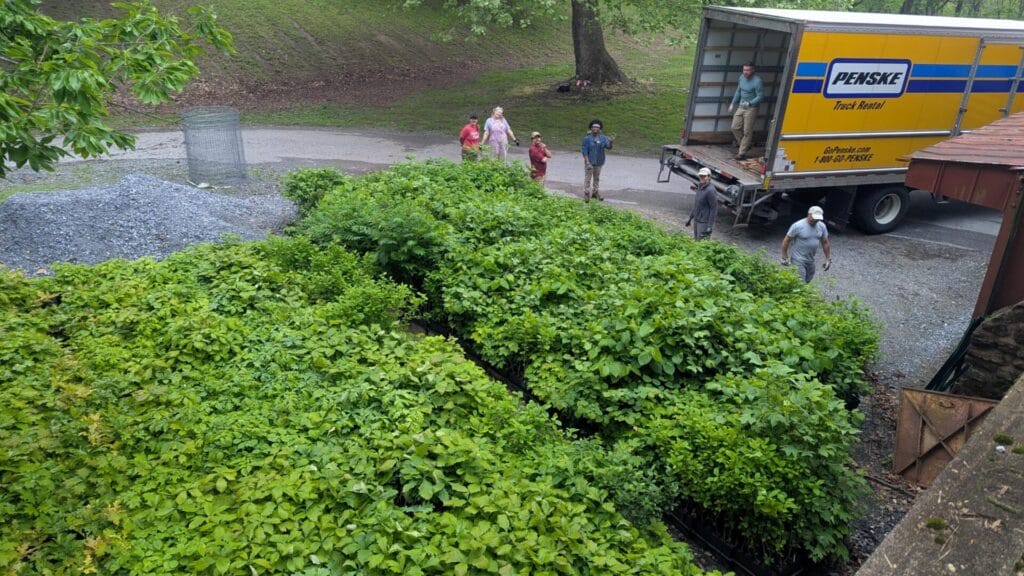
The seedlings have grown in the few weeks they were stored at Stroud. | Photo: Jarrod Shull
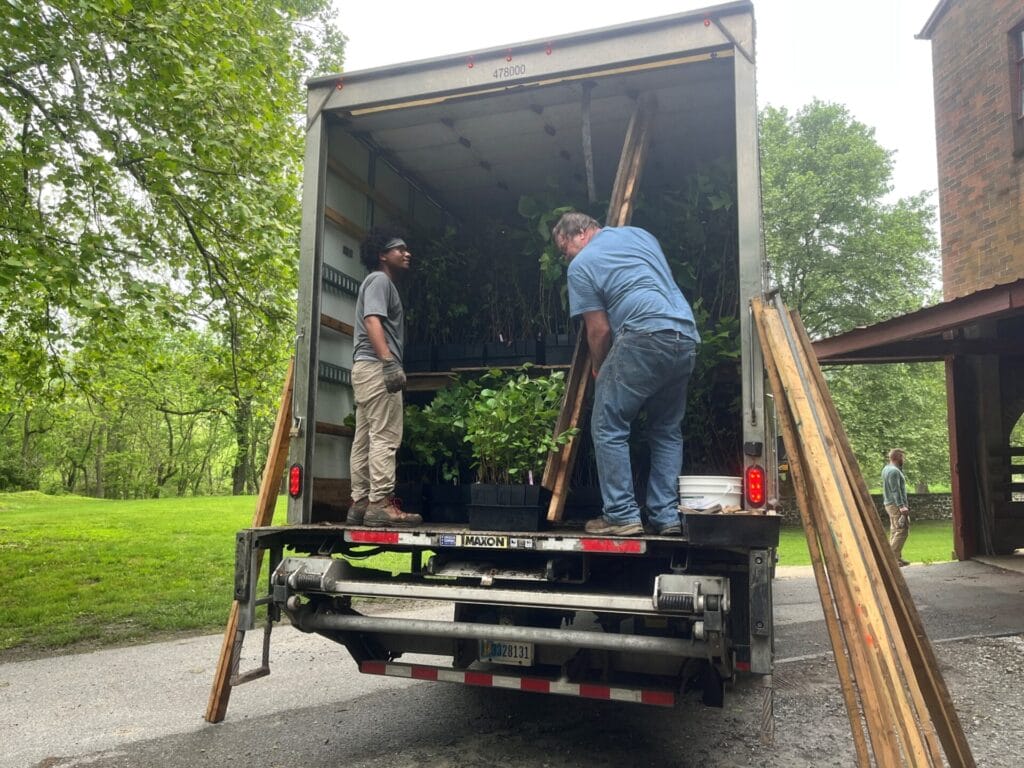
Loading the seedlings into the truck with plywood to separate them in levels | Photo: Jarrod Shull
We marked out and flagged the property lines, rights-of-way, and the planting areas for the contractors, who arrived on May 19 with a 21-person crew. It took three days for the crew to complete the planting, tubing, and staking of all 11,020 trees and shrubs. They were planted in 12-foot rows, wide enough to allow stewardship staff to mow between them, reducing competition from other vegetation until the seedlings have matured.
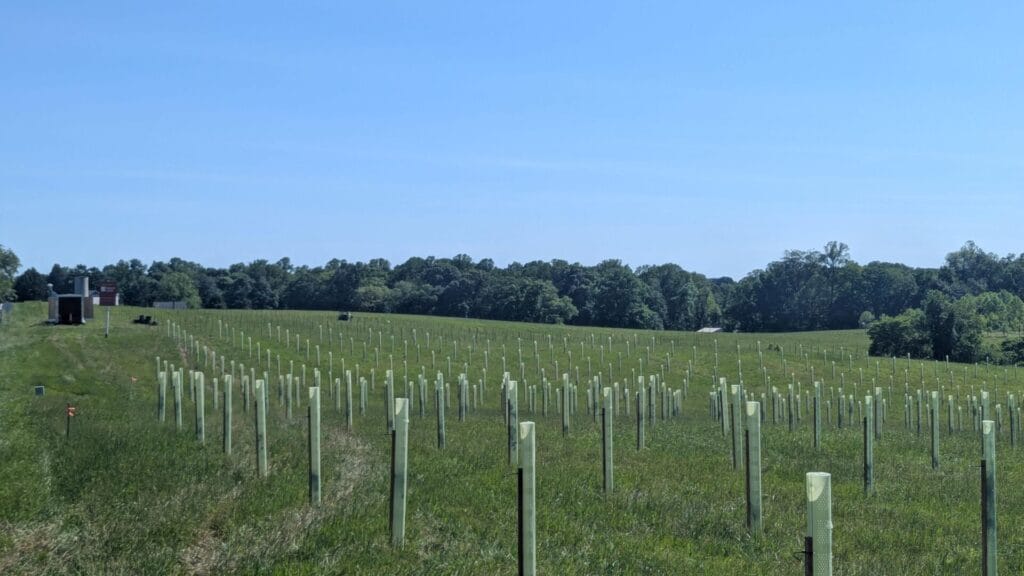
The rows will become less obvious over time as some trees naturally won’t survive. | Photo: Jarrod Shull
Natural Lands plans addition large-scale reforestation projects at several other nature preserves under their care, including Diabase Farm Preserve (New Hope, PA), Sadsbury Woods Preserve (Parkesburg, PA), and Stroud Preserve (West Chester, PA). By the close of 2025, the organization will have planted 22,540 trees and shrubs on 75.5 acres in just one year.
Funding for this project was provided by the E. Kneale Dockstader Foundation; the Conservancy Grant Program, Commissioners of Chester County, Pennsylvania; and donors to Natural Lands’ preserve restoration fund.
Watch the before and after planting video.
next post
Massive Reforestation Effort at Peacedale Preserve
June 17, 2025
FOR IMMEDIATE RELEASE MEDIA, Pa., June 17, 2025 – Natural Lands announced a massive tree-planting effort was completed recently at the organization’s Peacedale Preserve in […]
continue reading